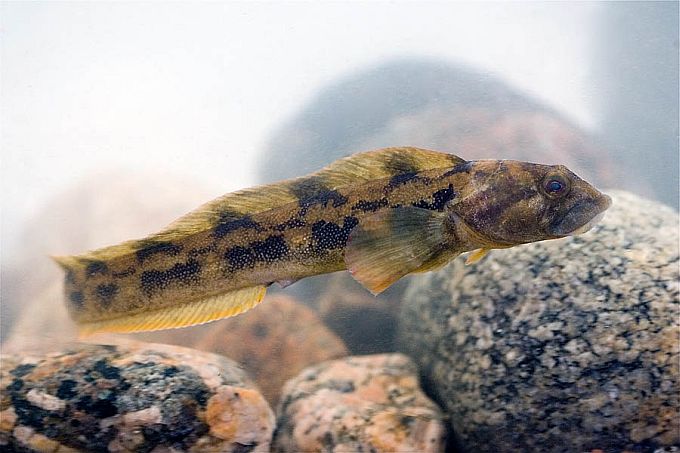Viviparous eelpout or blenny Emakala or kiviluts Zoarces viviparus
The little researched eelpout belongs to the Perciformes order and Zoarces family of fish and is the only viviparous fish species fish, that is, giving birth to live fry (larvae), in Estonian waters.
The birthing started already last in December but goes on also in February. How do things proceed?
The male fertilizes the roe in the body of the female in August-September. From the fertilized eggs fry develop that at once after the birth from the female start an independent life, being about 4 centimetres long. It is not known at what age the female becomes sexually mature.
As for body shape eelpouts remind of a burbot with a body flattening towards the tail, a dorsal fin reaching from the head almost to the tip of the tail and an anal fin. Smooth, mainly coloured in brown hues (the colouring is actually very variable, depending on the bottom), without scales and with a slimy skin. A fish with thick lips, bulging cheeks and large eyes.
Eelpouts move in water layers near the bottom and quite deep down which does not mean that they will not come into quite shallow waters on foraging. In turn they are hunted by larger fish of prey and among seawater fowl, by cormorants for instance.
Slow with regard to growth, their length passes 30 centimetres only at ten years old and the weight only reaches 150 grams.
On the fish counters of shops we will not see the eelpout on sale; very rarely some individuals can be found among the Baltic herrings.
For the Latvians the eelpout is their national fish – it is considered good manners to include eelpout dishes among the various dishes at large festivities. The eelpout with its white flesh is very delicate smoked, and also served in aspic. In Estonia it has not been customary to prepare eelpout dishes – interesting why not?



